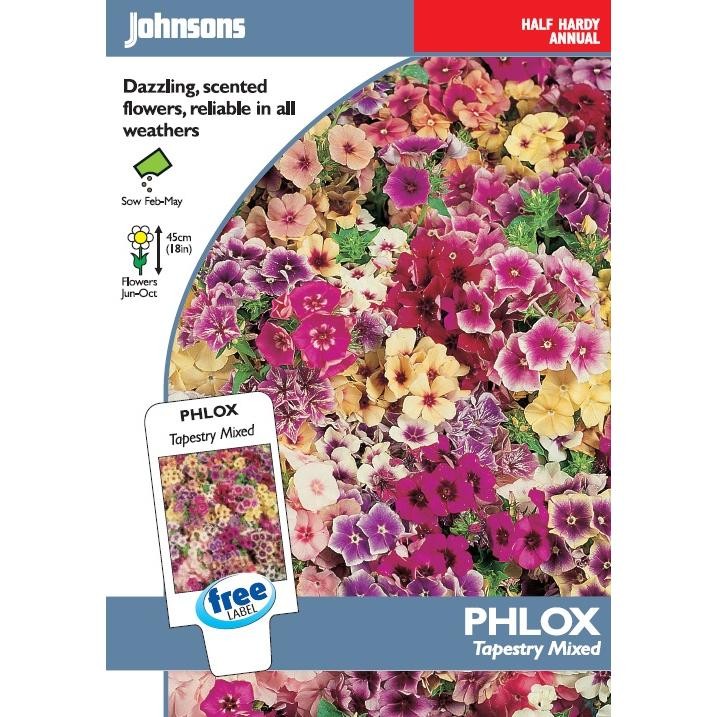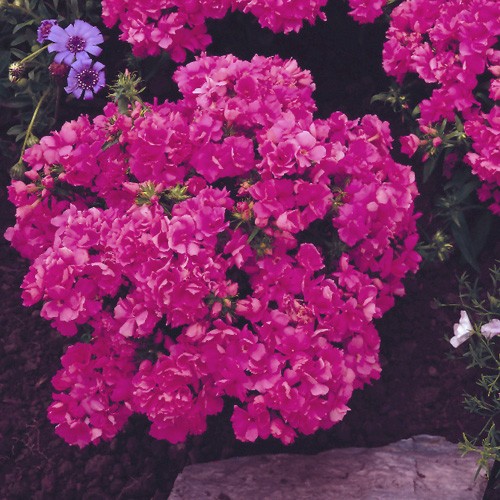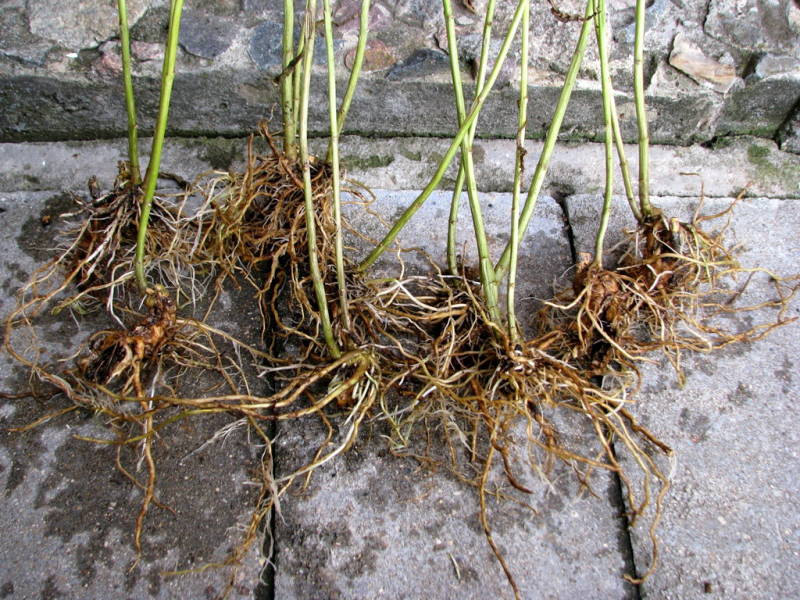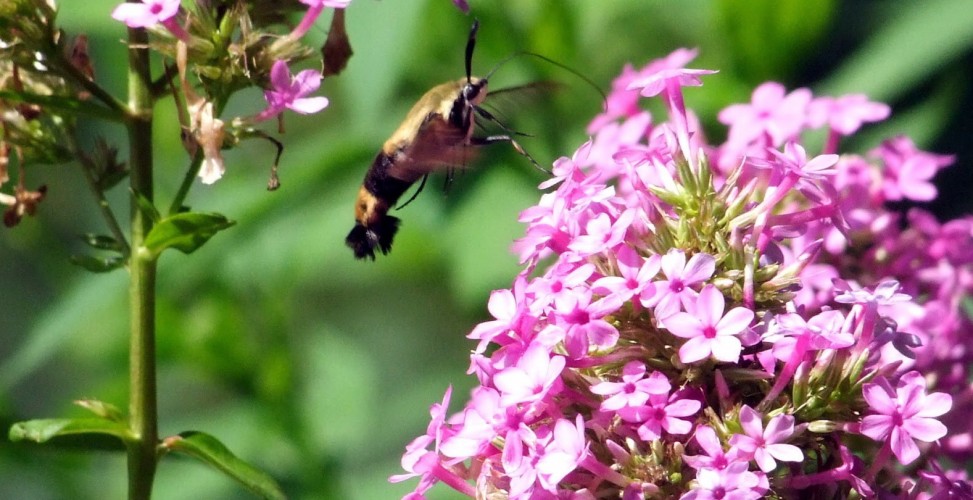Drummond's phlox (Phlox drummondii), popular not only in our country, but also in Europe, acquired its name thanks to the English traveler Henry Drummond. He was the first to send flower seeds to England, collecting them on the American continent.
The phlox plant belongs to the rich family of cyanids (Polemoniaceae), in which there are more than 80 species. The name in translation means "flame", this is how in 1737 Karl Linnaeus called a bright red flower. Currently, 40 species are successfully cultivated around the world. Most garden varieties are perennials, but not Drummond, which is an annual. As already mentioned, he hails from North America, but feels great in Russia.
The Drummond variety is an annual herb that reproduces exclusively by seed. This favorite houseplant in horticultural culture has a decorative value, since it is quite easy to select. Regularly, store shelves are replenished with new interesting shades. Currently, none of the varieties has any other application, except for decorating flower beds.
Thanks to continuous breeding work, new varieties appear every year. The sizes and shapes of flowers, their shades, as well as the dimensions of the bushes change.
Characteristic
Depending on the variety, the plant grows 30-50 cm high. The root system is superficial and very fragile. The flowers are quite small - up to 2 cm in diameter, but there are also large-flowered species. However, due to the fact that there are a lot of them in the inflorescence of the umbrella or shield type, each bush always looks very magnificent. Flowering usually lasts from June to the end of October.
The color depends on the variety. There is a color of all shades of the rainbow: yellow, purple, white, red and others. The branched bush is well leafed. The leaves are small, dark green, oval-lanceolate. The stems are located opposite each other.
There are three types of petals: simple, double and semi-double. The edges are rounded, stellate, pointed, pointed, and fringed. They are even found with long tails. The color is uniform, with specks, dashes, and almost always the core of each flower is darker than the edges of the petal. The aroma is pleasant, attracts bees and other pollinators to the flower bed.
If the care is of high quality and there are enough nutrients in the soil, during the flowering period, the caps almost completely overlap the greens. Flowering and growth are completed during frost. When the temperature drops to 0, phlox dies.
Types and varieties
Although modern breeders have bred a great variety of varieties, not all are found everywhere. Most Popular:
- Star rain - easily recognizable due to the shape of the flowers - it looks like a star. Branched bushes grow up to 50 cm in height. Among the advantages is drought resistance. Very picky about lighting. There are lilac, pink and white shades, and sometimes two-tone.
- Phlox Drummond Tapestry - a mixture of several shades, forming a multi-colored carpet when sown. Differs in extreme unpretentiousness. On fertile soil and with sufficient rainfall, Phlox Tapestry does not require any maintenance.
- Promise Pink - the name speaks for itself.This variety is notable for its short stature - up to 30 cm, therefore it will be an excellent addition to rockeries or alpine slides. Pink flowers have a simple shape and a very bright hue, noticeable from afar, and also a very pleasant aroma that intensifies in the evening and at night.
Planting and leaving
Like other annuals, Drummond's phlox propagates by seed. A method other than seed is not used. Can be planted in autumn and spring. In autumn, they choose the time when all the trees on the site have already dropped their foliage.
The right timing for planting seeds in spring helps to achieve early and abundant flowering. The air temperature should stabilize at a stable plus mark above 10 ° C. The soil can be prepared in autumn by adding a large amount of compost to it, but in the spring it is still necessary to carefully dig up and loosen the soil.
The seedling method is used when there is enough space for sowing seedlings, the summer is very short, but you want to please yourself with flowers and grow them, no matter what. In other cases, sowing in open ground gives a guaranteed excellent result. The plant does not differ in demanding care, it is only important to take care of the correct preparation of the soil. Phlox loves light soils, so heavy ones are mixed with sand when digging. Loams are not suitable because they are too hot for the roots of the plant in summer, and access to moisture is difficult. It does not hurt to add a small amount of lime, the bushes respond very well to it.
After irrigation, grooves are outlined in the flowerbed, along which sowing will be performed. Their depth should not be more than 2 cm. Seeds are distributed in groups of 3 at a distance of about 15 cm from each other. After that everything is carefully sprinkled with earth and watered from a watering can with a fine dispersed spray. When shoots appear in 2 weeks, the excess plants are removed.
Standard care is to regularly water the flower bed, remove weeds, and feed the bushes. The first feeding is carried out a week after the emergence of seedlings with liquid nitrogen fertilizer. Then, with an interval of 1.5-2 weeks, the flowerbed is watered with a solution of complex mineral fertilizer.
In order for the bush to acquire a lush branched shape, it must be formed. If you leave the seedling as it is, it will mostly stretch out in length, bloom, and dry out after wilting. A different picture is observed when pinching. If, after the appearance of 5 pairs of leaves, pinch the top, the plant will begin to branch. Each branch will expel its buds. With this approach, flowering will last several times longer. The main thing is to remove dry flowers in time so that the bush does not waste energy on ripening the seeds.
When the soil dries out, the plant suffers greatly. In critical cases, shedding of foliage and buds occurs. However, with artificial watering, it is important to observe moderation, since excess moisture leads to the appearance of various diseases. Watering is carried out when the topsoil dries up.
Timely weed removal is equally important. They are removed completely, along with the roots. Phlox have a superficial root system that is extremely sensitive to the presence of competitors. You can loosen the soil very carefully to a minimum depth.
Do not use manure and nitrogen-containing fertilizers during watering during the summer. Excess nitrogen is harmful to the plant, as it leads to an excessive build-up of green mass. The flowers will have too little strength, they will be small and inconspicuous. The recommended amount of dressings per season is 4.
[alert color = "green" icon = "chevron-down"]On a note! To collect seeds, yellowed bolls are plucked and folded to dry. The collected seeds are laid out in paper bags, sorted by varieties and shades. [/ Alert]
Diseases and pests
Succulent bushes, which are very fond of watering, serve as excellent food for slugs. If grapes or cabbage grows nearby, an invasion of these pests can be expected with a high degree of probability. To protect the flower bed from slugs, sprinkle the soil with ash, tobacco dust, and fluff lime is also good. Against caterpillars they are treated together with other crops, using the same agent as for them.
If the foliage on the phlox turns yellow and begins to crumble, the most likely reason for this is drought. Plants lack moisture. Watering must be increased, otherwise all the bushes will die.
From May to June, traces of vertical cracking of the stems can be found on individual bushes. After healing, the crack is covered with a characteristic flow (callus). The stem itself becomes coarser, more fragile. In strong winds, such bushes can even break down. The main reason for this phenomenon is the increased concentration of nitrogen in the soil, as well as too much acidity. Correct this by liming.
When infected with viral infections, the size of the flowers changes, they usually decrease. It is even possible that various ugly mutations appear. Unfortunately, there is no cure. There is only one way out - to completely destroy the affected bushes. Typical viruses inherent exclusively to phlox have not yet been identified. They are susceptible to infection from neighboring garden crops.
Fungi enter plants through microscopic wounds: cracks in leaves, scratches on stems. Under favorable conditions (damp and cool) mycelium grows very quickly. This process is accompanied by the appearance of spots on the leaves, the appearance of dried out areas. For many fungal diseases, their own preparations have been developed, usually spraying with Bordeaux liquid is used as an effective measure.
By following all agrotechnical rules, you can enjoy bright flowering for a long time.











